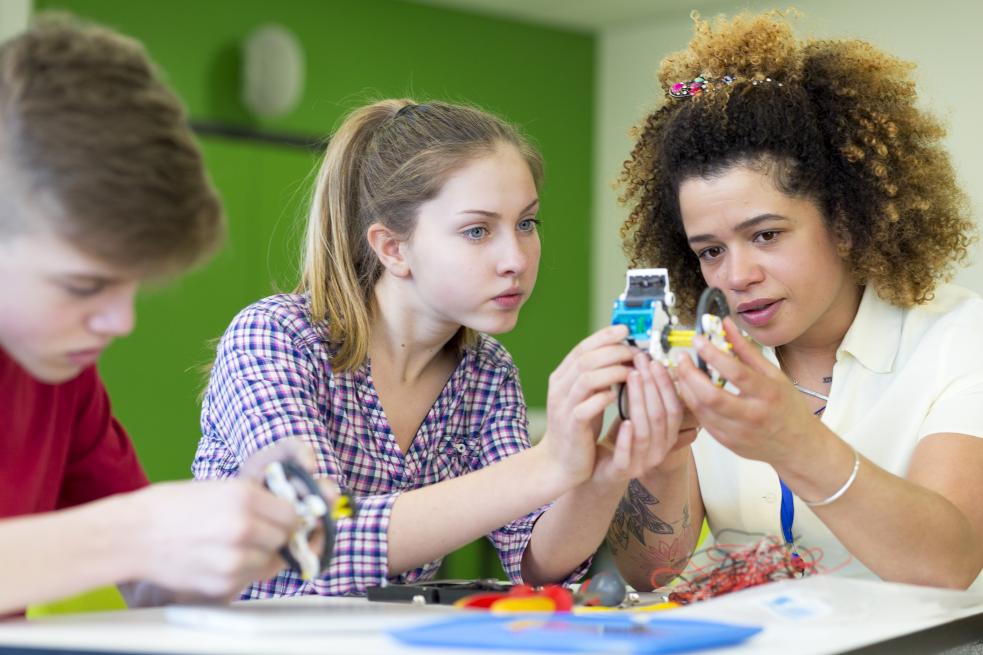Reflecting on public engagement with physics and engineering
NCCPE’s Research Fellow and Policy Analyst, Ann Grand, recently carried out a research project on behalf of the Ogden Trust and STSC, alongside Co-director, Paul Manners, and NCCPE Associate, Bethany Rex. In our latest blog, Ann shares her reflections on the project.

The Research Excellence Framework (REF), a system for assessing the quality of research conducted at universities in the United Kingdom, is run approximately every seven years. In REF 2021, the UK’s universities submitted more than 6700 Impact Case Studies (ICS), describing the impact their research has had on society, the economy, culture, health and more. Around 170 of those ICS concerned research in physics and 390 research in engineering.
For many researchers and universities, supporting public engagement with their research is an important pathway both to create and demonstrate impact. The Ogden Trust and the Science and Technology Facilities Council (part of UK Research and Innovation), with the involvement of the Institute of Physics, commissioned the NCCPE to analyse the physics and engineering ICS to reveal the ‘state of play’ of public engagement policies and practices and identify gaps and priorities for future work. To get a sense of what it feels like to be at the ‘sharp end’ of public engagement and impact, we also talked to physics researchers and engagement professionals.
In physics, about half of the ICS mention engagement as a pathway to creating impact. The proportion is much smaller in engineering; it’s mentioned in about five per cent of ICS. Most ICS are about public engagement with the outcomes of research in physics and engineering but a small number are focussed on research in public engagement through the medium of physics or engineering.
Why engage?
Key priorities for public engagement in physics are raising awareness, knowledge and understanding of physics, closing the science skills gap by supporting teachers and inspiring the next generation of scientists to study physics at school and university. Engineering shares these priorities but also has a much stronger focus on influencing government policies.
Where does engagement happen?
As the priorities might suggest, a lot of public engagement happens in schools , with students and teachers but also through public events, science fairs and festivals, exhibitions and in open days at facilities such as planetariums and observatories. There’s also an emphasis on ethe media, through researchers appearing on television, radio, online and on social media, or writing books, newspaper and magazine articles.
Who are the publics in public engagement with physics and engineering?
Not all ICS tell us who the target publics are. Of those that do, school students are an important public for physics. Increasingly, engagement activity focusses on schools in socio-economically deprived areas, with young children and their families and with communities that are under-represented in physics, such as girls and women. With its slightly different priorities, engagement in engineering is often targeted at policy-makers and professional bodies.
What supports high-quality engagement?
The ICS give us a good sense of what sustains high-quality engagement. It needs long-term support from the university or department, to allow strategic planning of engagement and the evaluation of its impact. It needs adequate resources, sustained funding and stable and secure staff (both researchers and public engagement professionals) who can deliver it. It’s also important that its aims, purposes, methods and publics are clearly identified.
What of the future?
The next REF is due to happen in 2029 and physics and engineering departments are already gearing up for it. REF2029 is likely to look different to REF2021, with potential redistribution of weighting across the elements, an increased emphasis on people, research culture and environment and greater recognition of the range of roles and people that are involved in research.
We think this will require universities and departments to formulate long-term strategic approaches to planning, evaluating and evidencing the impacts of public engagement, sustained by funding for specialist support, resources, training and guidance for evidencing impact and creating supportive institutional cultures.

